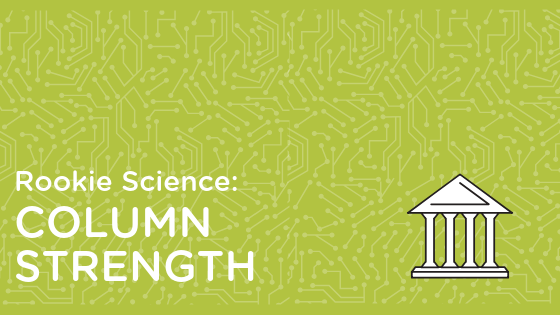Video Transcript
Hi, I’m Rene, a children’s staff member with the Charlotte Mecklenburg Library. And today I’m going to be sharing a science experiment with you to test the strength of different shapes of columns.
So we’re going to be testing the strength of three different shaped columns just made out of regular typing paper. We’re going to be testing one that is a triangle shape, one that is a rectangular shape, and lastly we’ll test a cylinder. These paper columns are very easy to fold. I’ll fold the rectangular one to show you how it’s done.
First, we’ll fold it in half. Then we’ll use the center crease to fold towards the center to get our four equal sides. Next we’ll just tape the edges to hold our column’s shape. We’ll also make sure that all of our paper columns are the same. We’ll use three pieces of tape on each one so that they’re all equal.
Now for our test today, we’re going to test how much weight this paper column can hold. Let’s start with the rectangular one. For our weights, we’re going to use books. Can you make a prediction of how many books you think this paper column will hold? All right, let’s try it out. One. Two. Three. Four books. All right. Let’s test another one. This time, let’s test the triangular shaped column. Now make your prediction. Do you think this one will hold more books or less than the rectangle one? Let’s try again. One book!
And finally, let’s test the cylinder. Once again, make your prediction. How many books do you think the cylinder column will hold? More or less than the other two we’ve tried? Here we go! One. Two. Three. Four. Five. Six. Seven. Eight. Nine. Ten. Eleven. Twelve. Twelve books! Were your predictions correct?
Now, the science behind our paper columns is fairly simple. When we look at the different shapes that we used today, you’ll notice that this column—our rectangle—has four sides, or four walls. The triangular column has three sides—three walls. And the cylinder—it only has one wall. Whenever we’re testing how much weight these columns will hold, it’s these walls that have to support and hold up all of that weight. And unfortunately with these two shapes, it’s those edges or those walls that don’t evenly distribute or hold up that weight. With the column, because there are no edges, no sides, the entire surface of the column is able to hold up all of the weight. It’s evenly distributed around the column, and therefore it’s able to hold more weight than the other two shapes.
Thank you for joining me to try this experiment today.

